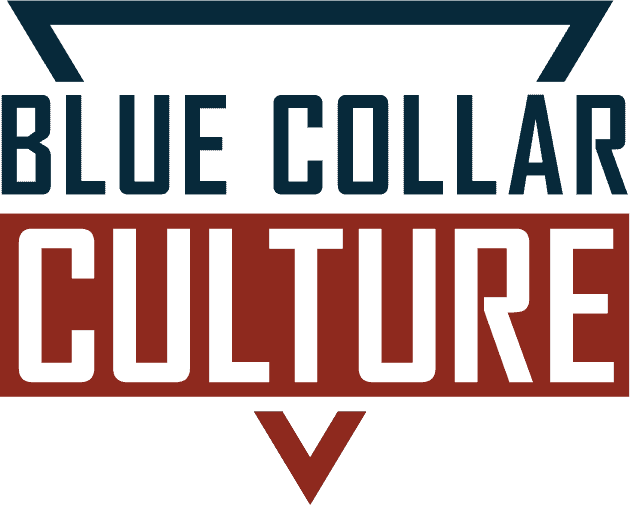
If you want to inspire your team to work harder and better, you need to give them a mission that they align with. Make them know that they are creating meaningful work. No one wants to do something without any greater purpose behind that. As a leader, it’s your job to want to make sure that you understand your people. Start having honest conversations with them because that is key to inspiration. Join Ryan Englin as he talks to Tony Martignetti, founder of Inspired Purpose Coaching. Listen in as they talk about how you can inspire your people as a business owner or leader. Know how you can have a growth mindset instead of a fixed mindset. Discover how you can give your employees a meaningful mission today!
—
Inspiring Your Team To Connect With Your Mission With Tony Martignetti
When it comes to building a great team, it’s not only important you find great people. You got to find people that are inspired by what you’re doing, aligned to what you’re doing and want to move in the same direction that you’re moving. This might sound or feel a little touchy-feely. Our guest and I are going to talk about that and why it’s so important you’re able to connect and inspire the people you have on your team.
It will not only make you a better leader or help you to raise new leaders but it will also help you to achieve all of your goals in business. Whether it is to grow the company, increase profits or impact the world. Our guest is an inspired purpose coach. The name of his company is Inspired Purpose Coach. He is working directly with leaders who not only need inspiration but aspire to be more. My guest is Tony Martignetti. His goal in helping to change the way these companies’ cultures work and these leaders operate is so inspiring to me. I’m excited about this episode. Thank you so much for being here. Let’s jump right into the show.
—
Tony, welcome to the show.
Thank you so much. I’m thrilled to be here.
I’m excited about our topic. It’s no secret, I’m into the people part of business and you’re into the people part of the business. I’m looking forward to our conversation. Tell me, what is the biggest myth about your industry?
I usually wrap this up in one particular quote. “Amateurs compete and professionals create.” When we get into this industry, it feels as though we are so unique and we have to make sure that we stand out in this crowd. We have to be very close in how we show up in the world. The reality is we can make a much bigger pie if we talk with each other. We talk to other people in our field, collaborate and make a bigger pie. That applies to pretty much any industry when you’re out there. If you try to be the person who’s constantly competing, then you’re missing out on the chance to create something bigger.
Amateurs compete. Professionals create. Click To TweetThere are so many truths and metaphors in life that we could apply to what you said there. I do see that. My focus is on helping these small business owners get talent and attract the best people. They always feel like they’re competing against everybody else. The one thing they all compete on is the dollar. I don’t know how you feel about it because we were getting to know each other but I don’t believe it’s ever about the money. You work with business owners and leaders all the time that have this mindset of competition versus creation. What do you see are the differences between those two groups? What bridge did that create group crossover to stop thinking about competing and start thinking about creating?
It comes down to this fixed versus growth mindset. It’s adapting this idea, “I don’t have all the answers. I can get out there and start to learn from others,” including my clients. There are some things that I learn by getting out and doing stuff. I think about some of the businesses that I’ve been involved with and helped coach along the way.
There are pivots that we create by putting out something and asking people very vulnerably like, “What do you think of this? Should I do X or Y? Did you like this or that? How can that inform the next step?” It’s a powerful way to look at the world. If you feel like you have to have everything perfect, from the moment you exit your stage of launching, it can be challenging.
It does take an element of humility to be able to ask those questions and look to support from others. It’s so unfortunate but as a society and a culture here, especially in the United States, humility has been looked at as a bad thing. We forget that there are people that have climbed the mountain in front of us and that have a wealth of knowledge that if we would ask could support us.
I love what you bring up there because I’m going to build from that to say courage and humility are the two most important traits that anyone can adopt to be successful. It takes courage to get started and humility to keep going. I call that the humility advantage and see it as, “I don’t have to be a leader.” You don’t have to have all the answers. You have to be okay with asking for help.

I find that a lot of times, they say it’s very lonely at the top. Talk to a lot of people that are in these high-level leadership positions, whether they own the company or they’re helping run the company. It feels very lonely for them. They don’t know who else to go to. They think that gritting through it, figuring it out and throwing stuff up against the wall until something sticks are the way to do it but there are so many ways to move into that creative mindset by surrounding yourself with great people.
It’s funny you mention that because I have my podcast too, which I’ll briefly mention. It’s called the Virtual Campfire. Almost every person who’s come on the show are people who have created amazing things in the world but almost every person who’s come on has mentioned the fact, “I wouldn’t be able to be here without them or there have been champions. People who believed in me first before I could believe in myself,” which I am a strong component of this idea that people have to believe in you along the journey for you to have that confidence and continue along the way.
You’re all about helping leaders inspire their teams and others. You inspire them. If we’re thinking about this, my passion is helping companies create amazing teams by creating positive work environments, which for so many small and medium-sized businesses, they’ve forgotten that there are human beings that come in and do the work every single day. They’re not just employees. They’re moms, dads, sisters, brothers, parents and kids.
They’re real-life people with real-life stuff going on. We forget about what I call the human condition. We forget that they’re real-life human beings. They have hopes, goals, dreams and aspirations but they need inspiration. They need something from their leaders. Often, these employees are turning to the leaders in their workplace to get what they’re not getting at school, at home and all that stuff. Feel free to throw them out there and then we’ll dig into them. What are a couple of things that people can do to inspire their team and others around them?
Before I get into the exact things they can do, I’ll start by saying, it’s also a part of being inspired by the people around you. It goes two ways. You don’t have to be this font of inspiration. It’s also about making sure that you bring people into your organization who inspire you to do the work that you do too. It’s like the self-generating process of continuing the wheel of progress in an organization where inspiration flows both ways. I’ll get back to answering your question.
The point is to enroll them in a meaningful mission. You want to make sure that there’s something behind all of the stuff that you’re doing that lights their fire and creates a spark in them that says, “Why are we doing this? What is the reason behind creating this business, showing up to work every day that continues to light them up and lights me up as the leader of the organization?” You have to remind them of that on an ongoing basis. It’s not a one-and-done. That is a never mission that is completed. Continue to find ways to light that spark and keep it lit throughout the day, weeks and months. That’s one thing. The other thing is to make sure that you understand your people.

Check-in with them and ask them, “What is it that you want more of in what we’re doing here? What is it that you would like to see more of an organization? It’s not just about what I want. It’s about what you want. I want to create an environment that fosters a mission that we all get excited about.” Make sure that you’re checking in. It’s not about the kumbaya type of stuff but asking them, “What are the challenges that get you almost a little bit fearful that we can’t make that happen outside of the comfort zone of where we are?”
As a leader, it’s giving and enrolling them in the mission. It’s your job to figure out what the mission is. However, it’s important that you understand what your people want and that they’re bought into the mission. If the mission doesn’t align with their goals, you might have a problem long-term or even short-term.
This is where some leaders come into an organization and feel like, “I’ve started the company. My work is done. All I have to do is continue to check the box and move forward.” That work is never done. You have to constantly be thinking, “What’s next? What’s on the horizon? How am I going to continue to challenge myself and the people around me to continue to feel excited?” I said fearful because there should be a little bit of scariness in what’s ahead that keeps the fire lit and doesn’t get people complacent. If you feel you’ve already arrived, then you no longer have that fire in you that says, “What’s the point and the next thing?”
If there’s not that next step of discomfort that says, “We’re going to grow and connect at a deeper level,” why fight for anything?
You should always be feeling like there’s something that’s on the horizon that’s keeping you on the edge of your seat and you have a growth edge that you’re continuing to strive for.
It’s a healthy fear. Not the fear where it’s like, “Am I going to have a job tomorrow?” That’s not what we’re talking about so we’re clear. Almost discomfort because people don’t like change. We know this. I talk about this book all the time. One of my favorite coffee table books is Change is Good. You go first. That’s one of my favorites. It’s that fear or anticipation of, “It will be a little different tomorrow,” but in a good way is what you’re talking about.
It comes back to this whole concept where you might have heard of healthy conflict. You don’t want a culture that constantly makes everyone feel like, “This is a nice place. Everyone’s so nice. We make each other happy.” That’s all great but it’s not going to move the needle in terms of creating a path forward or progressing forward. You want healthy conflict that allows people to feel like they can disagree and because they disagree, that allows them to build on ideas, the yes and ideas that move them in the direction of progress.
You want to create a culture of healthy conflict that allows people to feel like they can disagree. Click To TweetThe truth is if you and I agree on everything, one of us is unnecessary.
I love that but I’m going to stay on the call for a little longer.
I’m learning. This is great. Talk about this idea of mission. There are so many different ways we can go but take it wherever you think it makes sense. How do we do this? I get the communication side of it. That’s not what I’m talking about. How do we come up with a mission that is going to inspire our people to get up and do what they’ve got to do every single day? I’m sure there’s probably the big long version of it but what are some things people can do to make that happen?
First and foremost, if it’s something that you can do on your own and you don’t need people to do it, then you’ve got no mission and you just have a personal goal that can be achieved. You have to have something big enough that requires you to enlist a lot of people in it. If your mission is big enough that it requires you to build a team around it and that team needs to do a lot of heavy lifting to get it done, then you’ve got a meaningful mission. You want one that is going to serve to create something meaningful in terms of the impact that you would be proud to have as part of your legacy, both personally and as a company.
Do you have 1 example or 2 that you could share with some of the companies you’ve worked with? That way, we get the creative juices flowing as we’re thinking about what is that mission that’s bigger than me.
I’ll start by saying that I came from the biotech industry. I worked in an industry that was all about saving lives. We always had the patient at the center of everything we did. Every decision was based on, “There’s a person who’s waiting for us to do something that will help save their lives.” There’s a lot on the line for what we were doing but that’s not what I’ll share.
There’s one particular company that comes to mind that is working on de-extinction, which means bringing back to life certain species that have been extinct. The reason why is because it’s about saving the planet. There are climate change implications for some of these extinction events that are so important to bring us back into balance with our planet. It sounds like science fiction but this is the reality. The reason why these particular goals and missions are important is that it gets everyone thinking, “What is possible? Can we do this from scientific reasoning?” Also from a, “Should we do this? Are we the right people to do this?”
It’s spurring that creativity and that yes and type of culture by having this mission. It’s one of those things. I’m listening to you talk about this mission and I’m like, “I don’t know that one company is going to be able to pull that off.” It’s a lot bigger than that.
Yes. When you think about that mission, it’s massive but also game-changing. It requires you to get people thinking, “We need to do this as a collective whole.” It’s going to have an impact on society at large. We can start one person at a time bringing the right people into this environment to make that impact.
I feel like that’s a little bit of what Simon Sinek talks about in The Infinite Game with his just cause. We don’t know who the players are, how we are going to keep score and how we’re going to win but we know where we’re going. We’ll never know when we get there because it’s infinite. It keeps going but we’re moving our industry, society and culture in that direction for everybody to win. That’s fantastic.
If you’re not in biotech and you’re not going to be saving the world, that’s okay. Your mission doesn’t have to be that big. I think about the mission of my church. They’re only focused on the Phoenix area. I’m out in Phoenix, Arizona and they’re like, “We want to introduce Jesus to the people in Phoenix.” That’s it. Your mission doesn’t have to be changed the world.
It could just impact a community but it’s such a big thing that there are so many opportunities that people can rally behind it. I love it because when you’re clear about your mission, not only do you know how to but you communicate it regularly. This is where I get passionate about it. It’s going to be so much easier for you to attract great people and keep them on your team.
It is a ripple effect too. The key word around this is the people. One thing about the mission so far that I haven’t connected to is, “What are you doing for the people who come join your organization? Are you leaving them better off than you found them?” I love to think of this whole idea of bringing people into an organization, not just engaging them in the mission but maybe even enriching them, leaving them better off than you found them. When you think of that mission, there’s something about that which is saying to people, “Come join this cause because you will also be left not just an impact beyond society but also on yourself, leaving you with a positive impact on yourself.”

To do that, you got to do the second takeaway you gave us. You’ve got to understand your people and understand what they want. I’ve got little kids at home. When my kids don’t want to do something, trust me, there is nothing I can do or say to get them to do it. How do you do that? I’m sure it is probably going to be one of those duh things. How do you understand your people and figure out what they want?
It starts with committing to get to know them. Not just doing this on the surface but getting to know them on an intimate level. I’ve thought about this concept of not having people check themselves at the door when they come into the workplace. We need to understand what lights or fires them. What are their hobbies? What are the things they do outside of work that make them who they are? If we look at them as to, “This is a person who does numbers, inventory and what have you,” we’re missing a huge portion of what makes them who they are.
They’re a holistic person. Understanding, what are their hobbies? Are they a person who enjoys volunteering at a homeless shelter? Are they someone who enjoys playing an instrument? Celebrating them for who they are as a whole allows them to bring their whole self into that work and allows you to understand what are the causes that get them excited. If they’re not willing to bring them their whole self in, it’s not necessarily just on them. It’s also on you because you’re not giving them a space where they feel like they want to bring themselves.
It’s funny you’re talking about this. I got a couple of clients in mind that I’m picturing them reading this and going, “It’s all this warm and fuzzy touchy feeling stuff. Stop it. I’m not interested in that.” This is where I love it. You have to understand that human beings are the soft side of the business. We’re the warm, fuzzy, squishy part of the business. People are not cogs in a machine but so often, we treat them that way. They come in, do numbers and if they don’t do numbers well, we replace them. Maybe they don’t do numbers well because they’re dealing with some issues at home. That’s the part that so many people miss.
I hear people tell me all the time, “I wish my employees would care as much as I do.” I’m like, “Your employees could probably even care more than you do.” If you don’t care about the fact that they’re leaving their friends, their family and the things they do for fun at home while they come to work for you, if you don’t care about the fact that they might be going through some personal struggles and challenges, if you don’t care about those things, how you ever going to get them to care about your business?
Care is at the center of that. When you show people how much you care about them, they will reciprocate. They will show you how much they care about the cause and you. They will do things that you wouldn’t have normally expected them to do because you’re connecting with them on a human basis, not just a worker basis. They’re not workers. They’re humans.
When you show people how much you care about them, they will reciprocate and show how much they care about the cause. Click To TweetThey are human beings with hope, goals and dreams. It’s funny. I was expecting to say, “If you want to know what your people want, ask them.”
Thanks for bringing it back to basics. That’s exactly it. Ask them.
I don’t know if you’ve read The Dream Manager.
No, I haven’t.
It’s by Matthew Kelly. It’s a fantastic book with short hundred pages. He knows who his audience is. It’s a little business fable but he talks about the idea of finding out what your employees want. All these leaders are sitting around at the conversation table like, “How do we do this?” The new guy raises his hand and says, “Why don’t we ask him?” They’re like, “What? Ask him? That’s absurd. You mean ask them?” The sad part is we have lots of clients to do this. They ask their employees, “What do you want? How do you line to the vision?” They always get, “I don’t know.”
It’s funny because most employers have never asked. They don’t know how to answer because no one’s ever asked them. They never had to think about it. I’m going to throw this out there. If you do decide to do this and you want to understand your people and enroll them in a mission, you got to be patient with them because they’re not used to it.
I want to add one little thing because what you’re speaking about is so powerful. My tagline for my business is, “Inspiration through honest conversation.” The crux of all that is to say, “Where does inspiration come from?” It comes from this idea of getting deeper in the conversation and having an honest conversation with the people around you. I often say that honest conversation starts with yourself.
Inspiration comes from having honest conversations. And, honest conversations always start with yourself. Click To TweetThat goes back to, “Who’s the toughest person on the planet to lead?” It’s yourself. People want to follow a leader. They naturally do but to get ourselves to follow ourselves, that’s hard. I’m going to resist that all the time. It’s not easy but it’s simple. Enroll them in a mission, find out what they want and align to the mission. You will inspire and motivate people. You will create better teams and have better workplace dynamics. You’ll probably have a better business, ultimately more profitable because when your people are happy, they’re more productive. Productive employees usually are more profitable employees. It all rolls down to the bottom line.
There are a lot of people that aren’t doing this because it’s not easy. You got to look in the mirror and say, “What is it we want to do? What do we want to accomplish? How do we want to get there? Whom do we want to take with us?” What’s one thing that our readers can do? Maybe even by the end of the day, if they’re reading this, they could go back to their office, sit down and do this thing to move them in the right direction, almost that first domino that they get to knock over. What is something they could do?
I love this particular model of thinking because this one is where we get most stuck. I use this analogy, “Expand your vision. Narrow your focus.” The reason why I say that is because no matter what challenge you’re facing, it’s probably because you’re not looking at it as widely as you could. When I say expand your vision, it’s like, “If I’m stuck on a problem or not seeing things away that I want to see them, maybe I need to step away from my current viewpoint and expand it.”
“Look differently and wider. Look at the problem from a different angle. When I do that, I see new possibilities arise. With those new possibilities, I have to then decide the next step that I want to investigate and explore.” When you do that, narrow the focus and think, “What is that next thing that’s going to take my focus?” Do that. Move forward in that direction. That’s taking an experimental view of your path forward. If it doesn’t work out, that’s okay, at least you had taken action in that direction.
As you were talking about that, it got me thinking because it is. It’s tough. When you’re inside that jar, it’s hard to read the label. Sometimes being able to expand your vision can be difficult when you’re stuck in a jar. I got to think of this. It probably aligns back to everything you do. Why don’t you bring in some of your other leaders and ask for their opinion? Ask them to help you find their vision.
I was thinking about my daughter. She comes home every day like, “Daddy, I want to work with you.” We’re working on some things. I’m working on her mindset and the way she thinks about some things and teaching her about people. That’s what we do. I forget what it was but she’s like, “Daddy, how can I help you?” I go, “I’m struggling with this.” She’s like, “Daddy, why don’t you do that?” I’m like, “It’s because I didn’t think about that.”
It was the most basic day. It reminds me. I forget there was a movie I watched. She’s like, “Why don’t you say I’m sorry?” I’m like, “I don’t know why.” It was so simple, basic and easy to do because I could see that. I’m going to sit down and expand my vision but I’m still in that box. Bring in others, get an outside perspective and ask your kids. The way they sell things is crazy but that’s fantastic. There is so much here that we could unpack.
People are reading going, “I want to inspire my people and create better leaders. I want to be a better leader.” How do they learn more about what it is that you do? How do they get ahold of you if they want to consume more information? You got a short book that probably goes into some of this stuff but you’ve got some other things too. Talk about that. I believe you got a giveaway for our readers.
First and foremost, thank you so much for doing this. This conversation has been powerful. I enjoyed it. The starting point is to go to the website, InspiredPurposeCoach.com. There, I share a lot of insights and different blog posts around some of the things that are on my mind that help to expand the way people think about the world. I love to have those insights out there.

The book is called Climbing The Right Mountain. It’s a book that packs a punch and is a very short read. I did that very intentionally. I wanted to make sure people could find a way to get unstuck and think, “Am I on the right path for me in my business? How do I get unstuck?” That’s what the book is all about. There are a couple of stories about climbing mountains but that’s not the intention. If you want to get started, that’s a place to go find me. I’m also very available on LinkedIn. You can find me there.
You’ve got an assessment too.
I sure do. That’s one of my free giveaways here. Go ahead and take the Leadership Journey Assessment, which is a great tool for someone to check in like, “Where am I? Where would I like to be?” You can find that assessment straight on the website homepage. You can go there and find it. If you take the assessment, what’ll happen is you’ll get some feedback almost immediately by getting a PDF read out of your report and also understanding what paths you can take from there. That’s the free giveaway and you can start from there.
If you want to be more inspired by surrounding yourself with people that inspire you, learn from Tony. There’s a wealth of knowledge there and tons of free information. It sounds like a great book. I love books about metaphors. Thank you so much, Tony. I enjoyed our conversation. There’s going to be some people out there going, “I got to sit down and figure out how to expand my vision so I can enroll people in a mission and align them to that mission by finding out what they want.” Fantastic takeaways. Thank you, Tony.
You’re so welcome. Thank you so much.
Important Links
- Inspired Purpose Coach
- Virtual Campfire
- Change is Good
- The Infinite Game
- The Dream Manager
- Climbing The Right Mountain
- LinkedIn – Tony Martignetti
About Tony Martignetti

I am Tony Martignetti, a leadership coach, entrepreneur, idea generator, people connector, and a curious adventurer. I bring together practical experience, formal training, and extreme curiosity, to elevate leaders and equip them with the tools to navigate through change.
I love helping people find clarity in their lives, so they are energized, fully present, and unstoppable. When leaders unlock their potential and lead from a place of inspired purpose, they impact and inspire everyone around them. I have dedicated myself to helping people live a life of inspired purpose.
Before I became a coach, I was a finance and strategy professional with experience working with some of the world’s leading life sciences companies. Along my journey, I also managed small businesses and ran a financial consulting company.
As I share my story, I want to leave you with three key lessons I learned along the way to help you on your journey from where you are now to where you would like to be.
Love the show? Subscribe, rate, review, and share! https://bluecollarculture.com/podcast/
